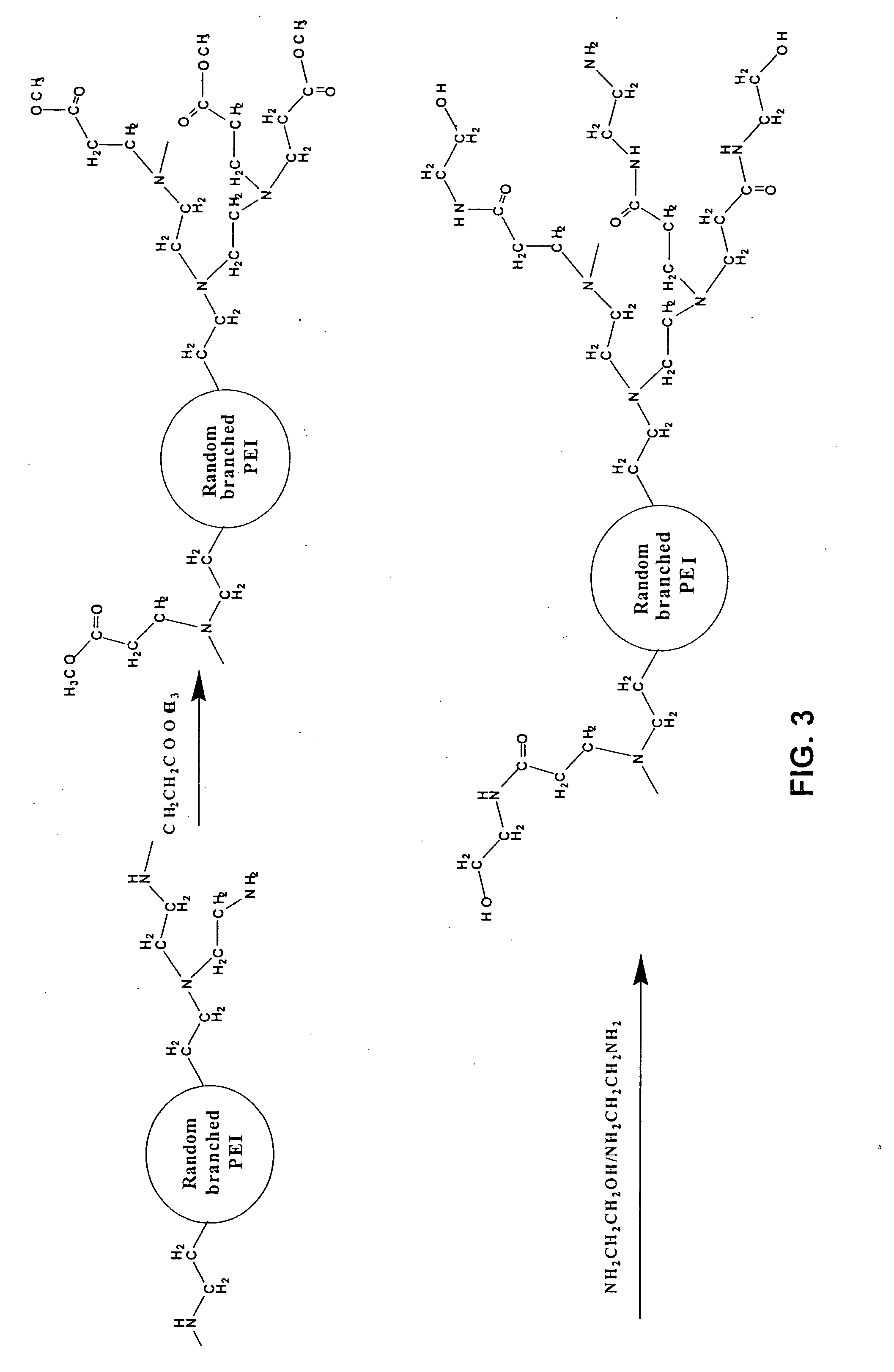Asymmetrically branched polymer conjugates and microarray assays
- Summary
- Abstract
- Description
- Claims
- Application Information
AI Technical Summary
Benefits of technology
Problems solved by technology
Method used
Image
Examples
examples
[0138] Materials:
[0139] Random asymmetrically branched polyethyleneimines were purchased from Aldrich and Polysciences. Regular asymmetrically branched polymers were prepared according to procedures provided in U.S. Pat. No. 4,289,872. Colloidal gold particles were prepared according to procedures published in the literature (G. Frens et al., Nature Physical Science, Vol. 241, Jan. 1, 1973, 20). All of the antibodies were purchased from Sigma-Aldrich, Biodesign, or Fitzgerald.
Synthesis of Modified Random Asymmetrically Branched PEIs with Amino Functional Groups (m-ran-AB-PEI-NH2-1.0)
[0140] The following reagents including random asymmetrically branched polyethyleneimine (ran-AB-PEI, MW 2,000, 25,000, and 75,000), methyl acrylate (MA, FW=86.09), ethylenediamine (EDA, FW=60.10) and methanol were utilized in this synthesis.
[0141] To a round bottom flask were added 1.0 g PEI (MW 2,000) and 20 ml methanol (solution A). To a separate round bottom flask were added 3.0 g methylacrylate ...
PUM
| Property | Measurement | Unit |
|---|---|---|
| Color | aaaaa | aaaaa |
| Mechanical properties | aaaaa | aaaaa |
| Biological properties | aaaaa | aaaaa |
Abstract
Description
Claims
Application Information
 Login to View More
Login to View More - R&D
- Intellectual Property
- Life Sciences
- Materials
- Tech Scout
- Unparalleled Data Quality
- Higher Quality Content
- 60% Fewer Hallucinations
Browse by: Latest US Patents, China's latest patents, Technical Efficacy Thesaurus, Application Domain, Technology Topic, Popular Technical Reports.
© 2025 PatSnap. All rights reserved.Legal|Privacy policy|Modern Slavery Act Transparency Statement|Sitemap|About US| Contact US: help@patsnap.com



